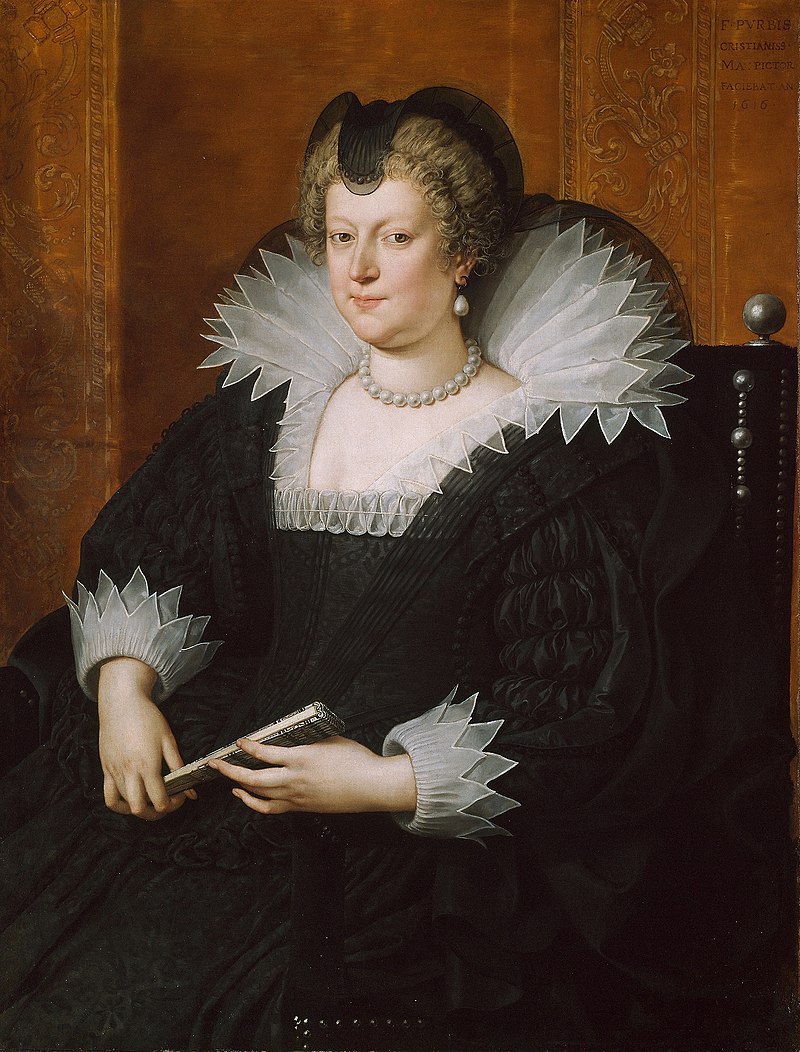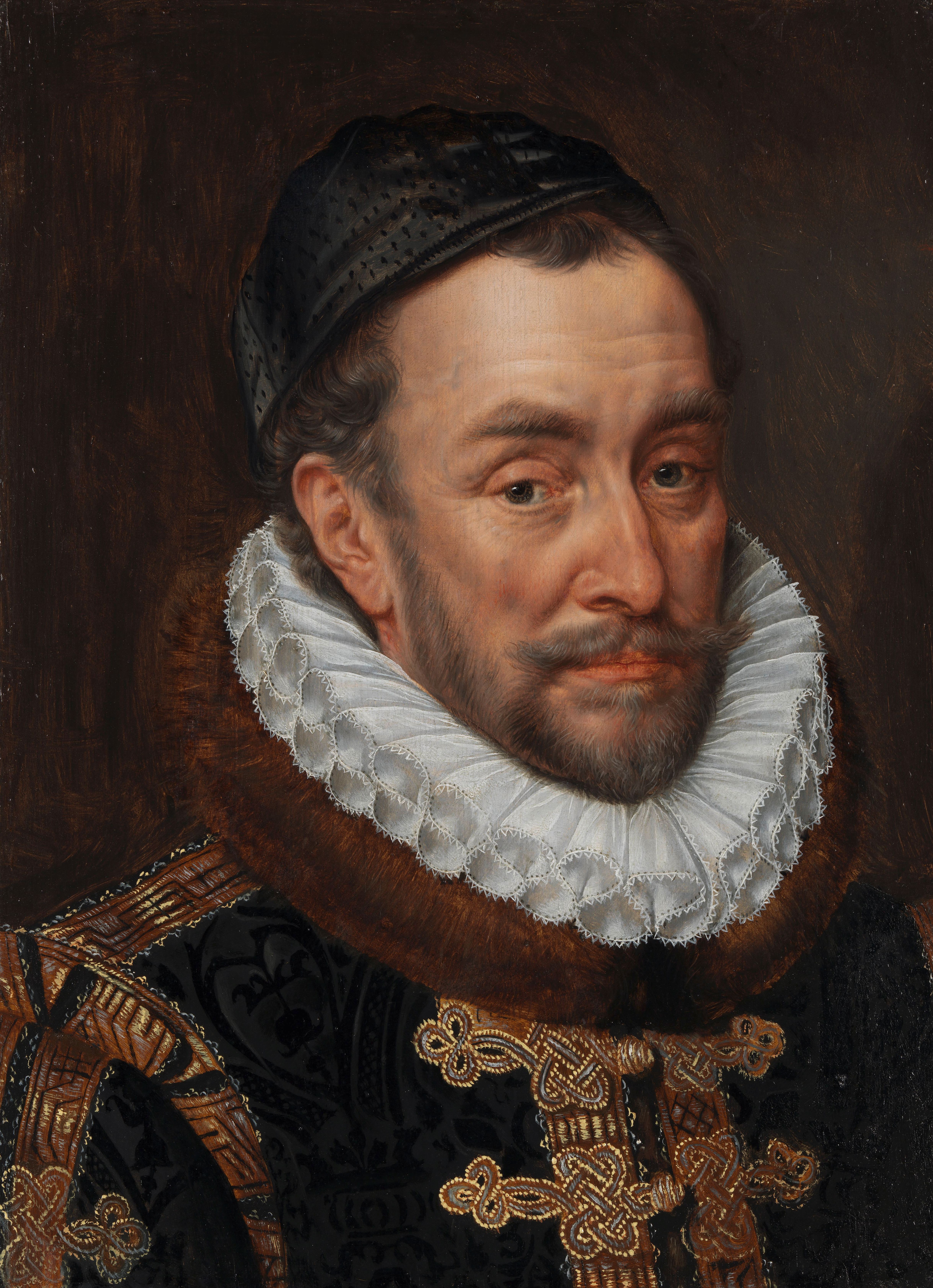© Unofficial Royalty 2025

Marie de’ Medici, Queen of France; Credit – Wikipedia
April 26, 1575 – Birth of Marie de’ Medici, Queen of France, second wife of King Henri IV of France, at the Palazzo Pitti in Florence, Grand Duchy of Tuscany, now in Italy
Marie was the daughter of Francesco I de’ Medici, Grand Duke of Tuscany, and Archduchess Joanna of Austria. The House of Medici had come to prominence in the 15th century, as founders of the Medici Bank, the largest bank in Europe, and later as Grand Dukes of Tuscany. Along with Marie, other prominent family members included Catherine de’ Medici, consort to King Henri II of France, and Popes Leo X, Clement VII, and Leo XI. Among her children are King Louis XIII of France and Henrietta Maria, who married King Charles I of England.
Unofficial Royalty: Marie de’ Medici, Queen of France
April 26, 1648 – Birth of King Pedro II of Portugal at Ribeira Palace in Lisbon, Portugal
Following the death of his father João IV, King of Portugal, Pedro’s mother Luisa de Guzmán became regent for the new king 13-year-old Afonso VI, Peter’s elder, partially paralyzed, and mentally unstable brother. In 1662, Afonso put his mother away in a convent and assumed control of Portugal as Prince Regent. He also had his brother’s marriage to Marie Françoise of Savoy annulled, and then he married her. Pedro officially became King of Portugal when his brother died in 1683. After his first wife died, Pedro married again to Maria Sophia of Neuberg because he had only one daughter with his first wife and wanted sons. On December 5, 1706, he had a seizure that resulted in a stroke, and he died four days later. Pedro was succeeded by was 17-year-old son João V, King of Portugal.
Unofficial Royalty: King Pedro II of Portugal
April 26, 1721 – Birth of Prince William Augustus, Duke of Cumberland, son of King George II of Great Britain, at Leicester House in London, England
Fans of Diana Gabaldon’s novels of The Outlander series and the television series of the same name know that the Battle of Culloden in 1746 resulted in a decisive defeat of the Jacobite forces that wanted to restore the heirs of Roman Catholic Stuart King James II of England/ VII of Scotland to the throne. Prince William Augustus, Duke of Cumberland was the commander of the British troops at the Battle of Culloden and is known by the nicknames “The Butcher of Culloden” and “Butcher Cumberland.”
Unofficial Royalty: Prince William Augustus, Duke of Cumberland
April 26, 1782 – Birth of Maria Amalia Teresa of the Two Sicilies, Queen of the French, wife of Louis-Philippe, King of the French, at Caserta Palace in Caserta, Kingdom of Naples, now in Italy
While still very young, Maria Amalia was engaged to her first cousin, the Dauphin of France. His mother, Queen Marie Antoinette, was Maria Amalia’s maternal aunt. However, the French Revolution, resulting in the deaths of her aunt and her first cousin, changed these plans. Her youth was spent in upheaval – the events in France – particularly the execution of her aunt – and subsequent conflict during the First Coalition soon found the family fleeing Sicily for the safety of Naples. After spending two years in Austria, she returned to Naples in 1802. Four years later, when Napoleon invaded, the family again fled, this time settling in Palermo, where British forces protected them. In 1809, Maria Amalia married the future Louis Philippe I, King of the French, and they had ten children. In 1830, King Charles X of France was overthrown during the July Revolution and forced to abdicate, and Louis Philippe became king. After her husband was forced to abdicate in 1840, the family left France and was welcomed in England by Queen Victoria, who gave them the use of Claremont House in Surrey, England. After her husband’s death, Marie Amélie lived a very private life, spending time with her family and enjoying a close relationship with the British Royal Family. At the age of 83, Queen Marie Amélie died at Claremont House on March 24, 1866.
Unofficial Royalty: Maria Amalia Teresa of the Two Sicilies, Queen of the French
April 26, 1826 – Death of Lucia Migliaccio, Duchess of Florida, the morganatic second wife of Ferdinando I, King of the Two Sicilies, in Naples, Kingdom of the Two Sicilies, now in Italy; buried at the Church of San Ferdinando in Naples
Lucia was the daughter of Vincenzo Migliaccio, 8th Duke of Floridia, a Sicilian nobleman, and Dorotea Borgia dei Marchesi del Casale from a Spanish noble family. In 1791, Lucia married Benedetto Grifeo, Prince of Partanna, and the couple had seven children. Lucia’s husband died in 1812. In 1814, Maria Carolina, the wife of King Ferdinando I of the Two Sicilies, died. Wanting to remarry, the 63-year-old Ferdinando turned his attention to the 44-year-old Lucia, whom he had met frequently at court. Because Lucia was not royal, the marriage caused a considerable scandal. Lucia did not receive the title of queen, and any children from the marriage would not be in the line of succession. However, the marriage remained childless. Ferdinando died from a stroke in 1825, and Lucia survived her husband by a little more than a year, dying on April 26, 1826, aged 55.
Unofficial Royalty: Lucia Migliaccio, Duchess of Florida
April 26, 1864 – Death of Auguste of Austria, Princess of Bavaria, wife of Luitpold, Prince Regent of Bavaria, in Munich, Kingdom of Bavaria, now in Bavaria, Germany; buried at the Theatinerkirche in Munich
Auguste was the daughter of Leopoldo II, Grand Duke of Tuscany. In 1844, she married Prince Luitpold of Bavaria, a younger son of King Ludwig I of Bavaria. The couple had four children, including Ludwig III, the last King of Bavaria. Auguste was a devoted mother to her four children, speaking to them only in Italian, and was a strong supporter of her husband and the Bavarian monarchy. In 1848, she publicly criticized her father-in-law, King Ludwig I, for his relationship with his mistress Lola Montez and its negative effects on the monarchy. On April 26, 1864, Princess Auguste died, aged 39, from tuberculosis, which she had suffered from for many years.
Unofficial Royalty: Auguste of Austria, Princess of Bavaria
April 26, 1923 – Wedding of King George VI of the United Kingdom and Lady Elizabeth Bowes-Lyon at Westminster Abbey in London, England
Although they had met at a tea party in 1916, Bertie, as George VI was known in the family, and Elizabeth had their first significant meeting on July 8, 1920, at the Royal Air Force Ball at the Ritz in London. Bertie had come to the ball with his equerry James Stuart, the youngest son of the Earl of Moray. Elizabeth and James were old friends from Scotland and shared a dance. Bertie questioned James about his dance partner and asked to be introduced. Although the meeting did not make much of an impression on Elizabeth, Bertie fell in love that evening and started courting Elizabeth. He first proposed to her in 1921, but was rejected because Elizabeth feared the changes in her life being a member of the Royal Family required. Elizabeth served as a bridesmaid in the wedding of Bertie’s sister Mary in February 1922. The following month, Bertie again proposed to her and was turned down once more. On January 2, 1923, after taking Elizabeth to dinner at Claridge’s and the theater, Bertie proposed a third time. After talking to friends and relatives and expressing her feelings in the diary, Elizabeth agreed to marry Bertie on January 14, 1923, although she still had misgivings.
Unofficial Royalty: Wedding of King George VI of the United Kingdom and Elizabeth Bowes-Lyon
April 26, 1994 – Death of Queen Zein of Jordan, born Zein al-Sharaf Bint Jamal, wife of King Talal of Jordan and mother of King Hussein I of Jordan, in Lausanne, Switzerland; buried at the Royal Cemetery, near Raghadan Palace within the Royal Compound (Al-Maquar) in Amman, Jordan
Queen Zein played a major role in the formation of the Jordanian state. In 1944, Zein founded the first women’s association in Jordan. She established the women’s branch of the Jordanian Red Crescent (affiliated with the Red Cross) in 1948 and organized assistance to Palestinian refugees during the Arab-Israeli War in 1949. She participated in the writing of the Jordan Constitution in 1952, which guaranteed women’s rights. After the assassination of King Abdullah I in 1951, Zein held power while the newly proclaimed King Talal was treated outside the country. She again took the reins of power in August 1952, when her son Hussein was proclaimed king, until May 1953, when he turned eighteen and assumed full constitutional duties. During the reign of her son, King Hussein I, Zein was an influential figure behind the scenes.
Unofficial Royalty: Queen Zein of Jordan
This article is the intellectual property of Unofficial Royalty and is NOT TO BE COPIED, EDITED, OR POSTED IN ANY FORM ON ANOTHER WEBSITE under any circumstances. It is permissible to use a link that directs to Unofficial Royalty.











